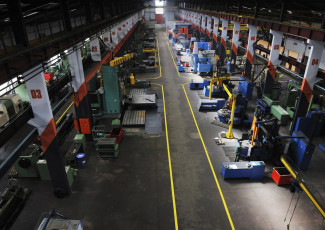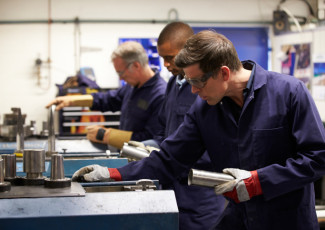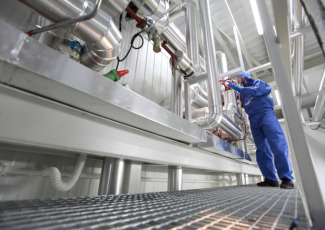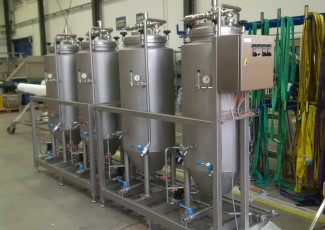Tips from a Leader in Clean-Energy Training
By Reyna Gobel
November 12, 2014
How one community college became a leader in training students for careers in renewable energy.
Clean energy is a growing power source in this country. A U.S. Department of Energy report estimates that wind power alone could produce 20 percent of the country’s electricity by 2030; it accounted for 1.8 percent of electricity in 2009. And installation of solar photovoltaics is booming this year, according to Renewable Energy World.
This means that clean energy is also a growing source of jobs — and community colleges are on the forefront of training this burgeoning workforce.
Kankakee Community College (KCC) in Illinois has a particularly strong renewable-energy job-training program. So strong, in fact, that the Interstate Renewable Energy Council named KCC the 2014 Accredited Clean Energy Training Provider of the Year, the first community college to earn that distinction. The good news keeps coming for KCC: The college just scored a $5 million grant to build a new facility for the renewable-energy program, and President Obama has singled it out as a model training program.
We chatted with KCC President John Avendano and professor Tim Wilhelm, the college’s energy technology coordinator, to find out more about KCC’s clean-energy training program and why it’s so successful.
Why did KCC start training students for careers in renewable energy?
Avendano: The program started seven years ago because of the passion Dr. Wilhelm has for renewable energy.
Wilhelm: In 1963, in public school science class, I watched a Bell Labs movie titled Our Mr. Sun. It melted my butter and floated my boat. I spent all the savings from my paper-route money on solar cells from the Edmund Scientific catalog, and with my dad’s assistance, I completed a scratch-built, solar-powered transistor radio receiver. I was bit by the solar bug, and 50 years later I still have the itch.
That itch drove Wilhelm toward a teaching career in electrical technology. When he saw that clean energy was becoming a viable career path, he started researching what tools and skills he would need to train his students for the field. The next step was writing grants to get funding for a program.
Why is renewable energy a concentration within the electrical technology training program and not a full degree program?
Wilhelm: I think it’s impractical to operate a community college degree program that is strictly a solar- or wind-energy program. Many colleges that have attempted this have not been successful. These renewable technologies are, at their foundation, electrical technologies.
Students can get work now as traditional electrical technicians and then progress into a solar- and wind-power jobs as more positions become available, Wilhelm says. Renewable-energy electrical technology is one of several focuses within the degree program.
Are KCC students finding jobs in the renewable-energy field?
Wilhelm: Some students who have graduated from our program and from within the renewable-energy focus track have found lucrative work in the utility-scale wind industry. Some now work in the solar arena, although they have had to relocate to find this work. We’re working to change that.
Wilhelm lives in a sustainable community, and he talks to his neighbors about using renewable energy. He also reaches out to major renewable-energy companies for advice and to pitch his students for jobs. He says it’s essential for college renewable-energy program leaders to get to know both local and national businesses in the industry.
How are you funding this program?
Avendano: The funding for the program has come mostly from federal grants, but the college also chips in to cover technology costs.
Was finding the land for the program difficult?
Avendano: Finding the space was easy because the 50-kilowatt wind turbine we just secured only required one acre of land. However, we needed to make sure the height met the local regulations for distance from trees and federal regulations on height limits when close to an airport. Local electricity providers shared the specifications. While the rules were complicated, not having actual technology to work with would have made the program impossible to operate. By the time our students graduate, they know how to safely climb, troubleshoot and service the turbine as well as troubleshoot and service our solar photovoltaic cells.
Looking for more information on renewable energy and green job-training programs? Visit AACC’s Sustainability, Education & Economic Development Center.








